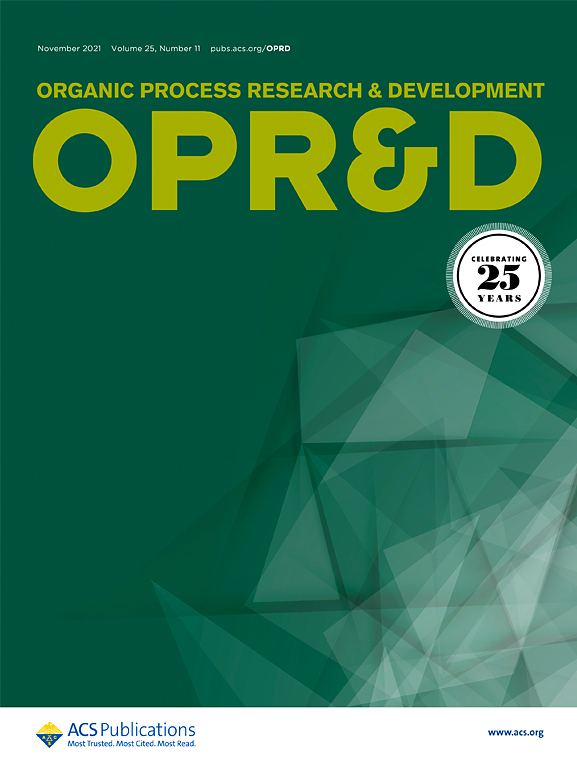Process Development of Bersacapavir, Part 2. Early Game Route Selection: Catalytic versus Stoichiometric Haloform-Type Amidation
IF 3.1
3区 化学
Q2 CHEMISTRY, APPLIED
引用次数: 0
Abstract
During the chemical development of bersacapavir API, special attention was paid to the key step of the early game synthesis: the extended haloform-type amidation. This manuscript describes the effort of the team toward the development of a catalytic version of that transformation thanks to the use of 1,5,7-triazabicyclo[4.4.0]dec-5-ene (TBD) and its unique reactivity. Guided by fine solubility studies, the catalytic procedure was optimized, streamlined, and scaled up. A very high yield and purity were achieved with significant process mass intensity (PMI) improvement in comparison to the previous process utilizing an excess of 1,8-diazabicyclo[5.4.0]undec-7-ene (DBU).

Bersacapavir 的工艺开发,第 2 部分。早期游戏路线选择:催化卤代甲酰胺化与计量卤代甲酰胺化的比较
在伯沙那韦(bersacapavir)原料药的化学开发过程中,我们特别关注早期合成的关键步骤:扩展卤代酰胺化反应。本手稿介绍了团队利用 1,5,7-三氮杂双环[4.4.0]癸-5-烯(TBD)及其独特的反应活性,为开发该转化的催化版本所做的努力。在精细溶解度研究的指导下,对催化过程进行了优化、简化和放大。与之前使用过量 1,8-二氮杂双环[5.4.0]十一-7-烯(DBU)的工艺相比,该工艺实现了极高的产率和纯度,并显著提高了工艺质量强度(PMI)。
本文章由计算机程序翻译,如有差异,请以英文原文为准。
求助全文
约1分钟内获得全文
求助全文
来源期刊
CiteScore
6.90
自引率
14.70%
发文量
251
审稿时长
2 months
期刊介绍:
The journal Organic Process Research & Development serves as a communication tool between industrial chemists and chemists working in universities and research institutes. As such, it reports original work from the broad field of industrial process chemistry but also presents academic results that are relevant, or potentially relevant, to industrial applications. Process chemistry is the science that enables the safe, environmentally benign and ultimately economical manufacturing of organic compounds that are required in larger amounts to help address the needs of society. Consequently, the Journal encompasses every aspect of organic chemistry, including all aspects of catalysis, synthetic methodology development and synthetic strategy exploration, but also includes aspects from analytical and solid-state chemistry and chemical engineering, such as work-up tools,process safety, or flow-chemistry. The goal of development and optimization of chemical reactions and processes is their transfer to a larger scale; original work describing such studies and the actual implementation on scale is highly relevant to the journal. However, studies on new developments from either industry, research institutes or academia that have not yet been demonstrated on scale, but where an industrial utility can be expected and where the study has addressed important prerequisites for a scale-up and has given confidence into the reliability and practicality of the chemistry, also serve the mission of OPR&D as a communication tool between the different contributors to the field.

 求助内容:
求助内容: 应助结果提醒方式:
应助结果提醒方式:


